In my enthusiasm to get a few friends up to the gorgeous Ginreiso Hut on Mt. Haruka for an overnight new years trip, somehow we ended up with a group of 9 people. Half on skis, the other half on snowshoes. Two years back, when a group of four of us went up at almost the same time of year, we were the only ones in the hut. This year, the hut was bustling with over 25 people staying over.
We started the ascent at the trailhead with heavy, wet snow falling, and temperatures well above freezing.
The snow eased off a little as we climbed, most of us shedding layers, trying not to overheat.

While it was mostly calm on the way up through the valley, once we got to the main Zenibako Pass ridge near the hut, we were exposed to a strong gale. Visibility was good, however, so we pushed on to the safety of the hut.
When we arrived at the hut the hutkeeper welcomed us with great fanfare, making sure we were suitably free of snow to enter the hut. We warmed up next to the fire and ate some lunch, and we set up our bunks. We also set up our table ready for dinner later that night. The hutkeeper came around and made sure that we had not yet hooked our stoves up to our fuel canisters. “Safety first!” he beamed. We then headed back out for a hike to the summit.
Views along the way were relatively good, before a snow shower snatched the view and visibility away from us as we neared the top. The snow was in great condition, and provided some great turns. The skiers in the group transitioned back to skins and climbed up for another run before returning to the hut.
 Upon returning to the hut and entering, I noticed a commotion at one of the tables in the hut’s first-floor dining area. Someone’s gas camping stove, attached via a hose to a regular non-threaded propane gas canister, was flaring very high. I overheard someone say it was probably because the canister had been tipped up, causing some liquid to escape through the hose. Sure enough, as soon as the person placed the canister back on the table, the stove stopped flaring.
Upon returning to the hut and entering, I noticed a commotion at one of the tables in the hut’s first-floor dining area. Someone’s gas camping stove, attached via a hose to a regular non-threaded propane gas canister, was flaring very high. I overheard someone say it was probably because the canister had been tipped up, causing some liquid to escape through the hose. Sure enough, as soon as the person placed the canister back on the table, the stove stopped flaring.At this point, I turned away to take the liners out of my boots. Only moments later, I heard a number of people in the group at the table scream. I turned around and saw that not only was the stove flaring at least one meter up towards the kerosene lamps hanging from the ceiling, there were now large flames flaring from the interface between the gas canister and the hose running to the stove. I can only assume that the stove user had tried to unhook the canister from the hose while the stove was still running.
My instinct was to run over to the table to see if I could help. A few people were blowing on the flames, but of course this was just forcing the flames higher, and causing them to catch light to the newspaper sheets covering the tables.
It was becoming clear that the best way forward was to smother the flames in some way. I ran to the kitchen, and grabbed the first small towel I could find. I doused it in water, returned to the table, and threw it over the gas canister. The towel was too small, however, and had little effect. So I ran into the kitchen again to try to find something larger. The only thing I could see were three thin, 30cmx30cm seat cushions.
I grabbed the cushions and doused them as much as I could in water, and ran back to the table. By now embers from the burning newspaper sheets on the table were starting to drop onto the straw mat flooring under the table. While I began yelling for someone to call the hutkeeper to get a fire extinguisher (he was outside the hut helping other guests), I threw the wet cushions over the canister and stove, and with the help of a few others around the table, finally managed to block any oxygen sources to the flames.
The fire was finally out. Quite the adrenaline rush.
Luckily no one seemed to be burned. The only damage appeared to be a number of newspaper sheets burned, as well as a plastic table cover which had melted in a couple of placed. It was only later in the night when I noticed that there was a fire extinguisher just next to the table where the fire had occurred. Being a powder type fire extinguisher, this would have made short work of the fire (never mind the mess of powder it would have left). I can only imagine that the hutkeeper has seen plenty of these incidents over the years.
Back to our group, and later on in the night, on the menu for dinner was a large shared Japanese hot-pot. This is one of my favourite meals to cook for a group on an outdoor trip. Plenty of fresh veges, tofu, pork, chicken, and udon noodles to finish off with the resulting broth. The shabu-shabu sesame and ponzu sauces are key, though; well worth the extra weight of lugging the glass bottles up the mountain.
That night, the hutkeeper kept the stove relatively well stoked, so despite some of us feeling a little too warm overnight, the group mostly slept well.
Because our second day there was the day the hutkeeper had to head back down to Sapporo for his weekly check-in at the university, we had to be out of the hut by 8am. Wakeup call at 6am, breakfast at 7am, and we were out by 8am.
With a couple of members in our group feeling like they were starting catch a cold, the group decided to head straight back down the mountain to the cars. From there, we headed to Asari Onsen for a hot spring soak, and the requisite ramen for lunch at Yoshiyama Shouten ramen (one of the best in Sapporo, according to Rick).









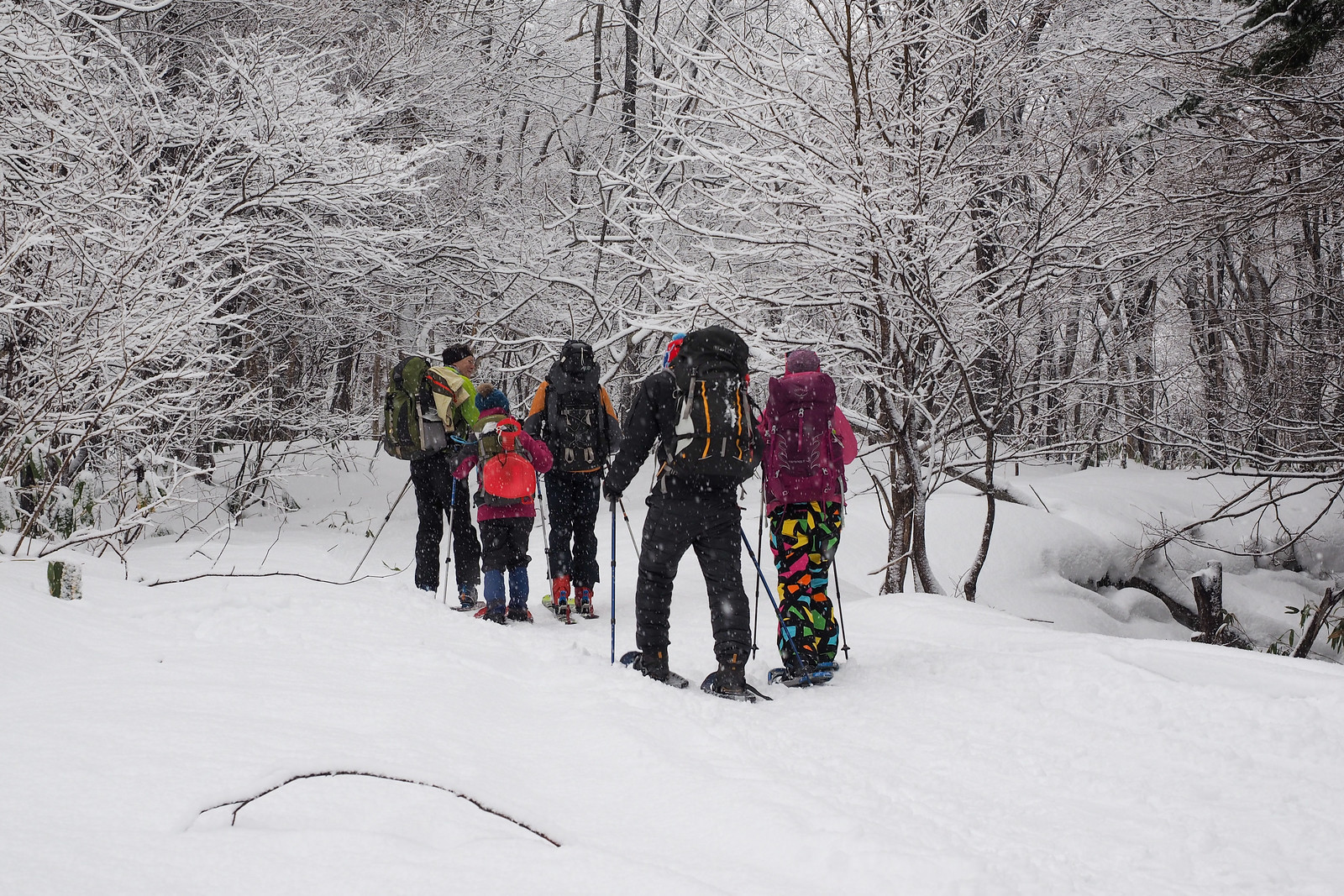

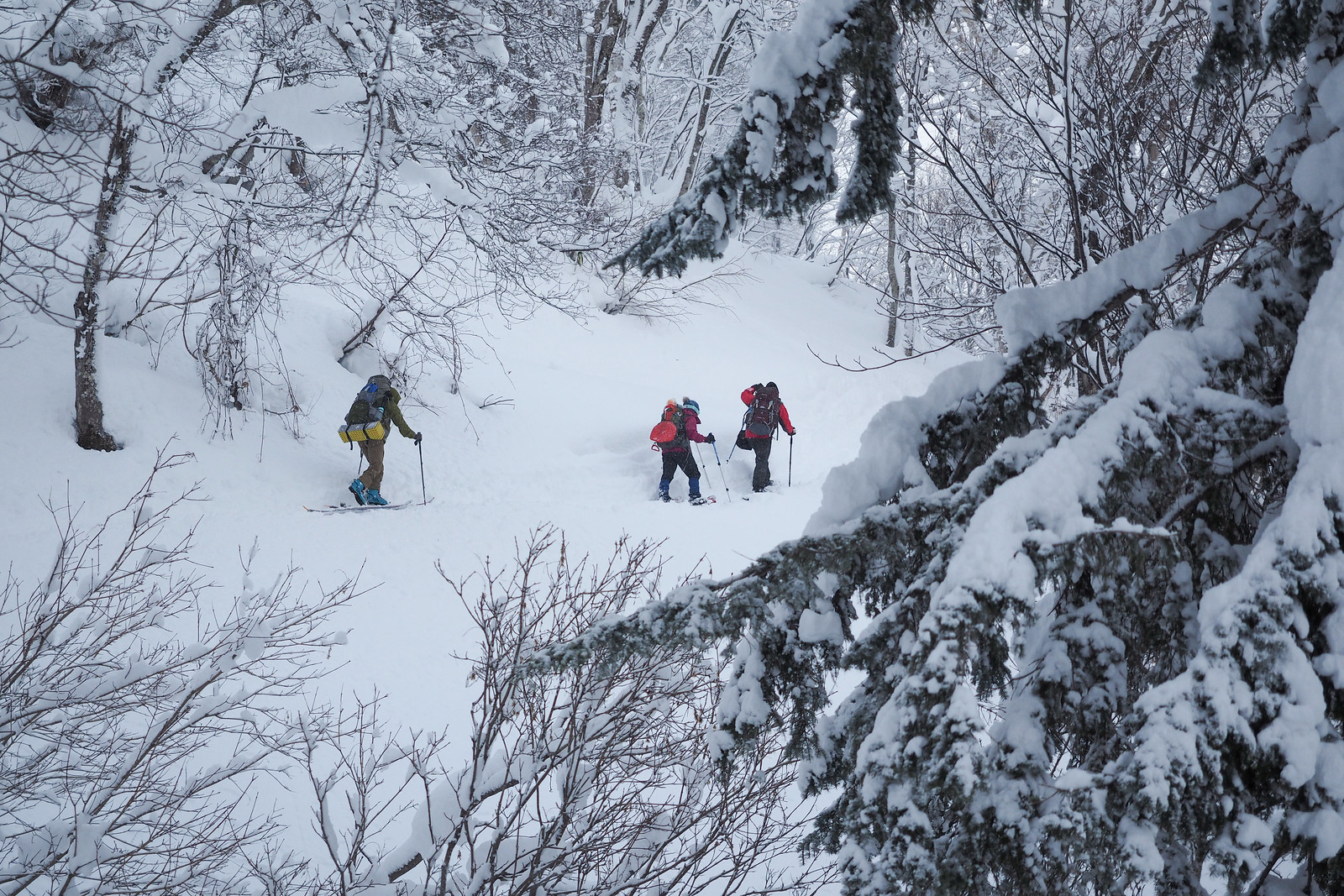

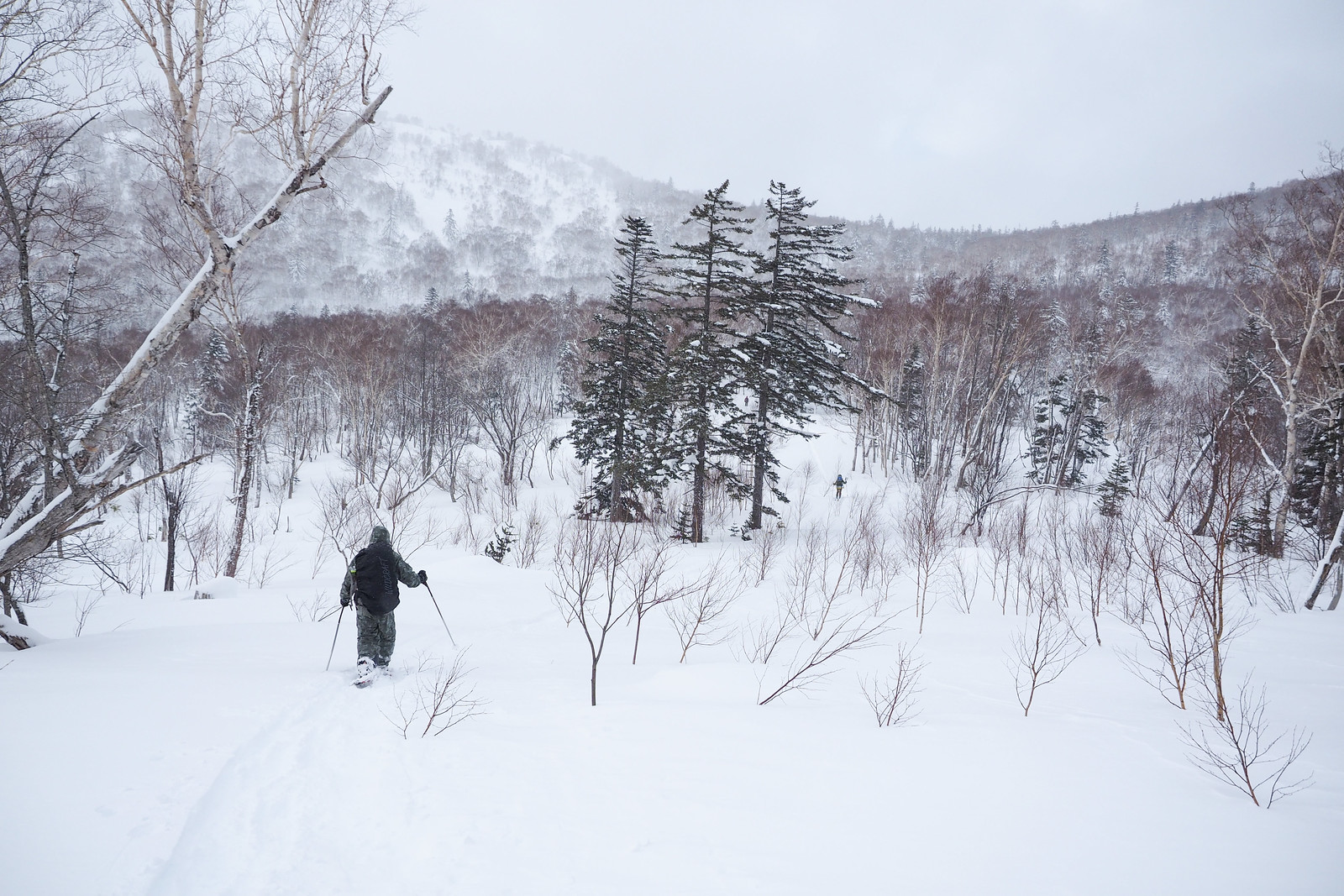
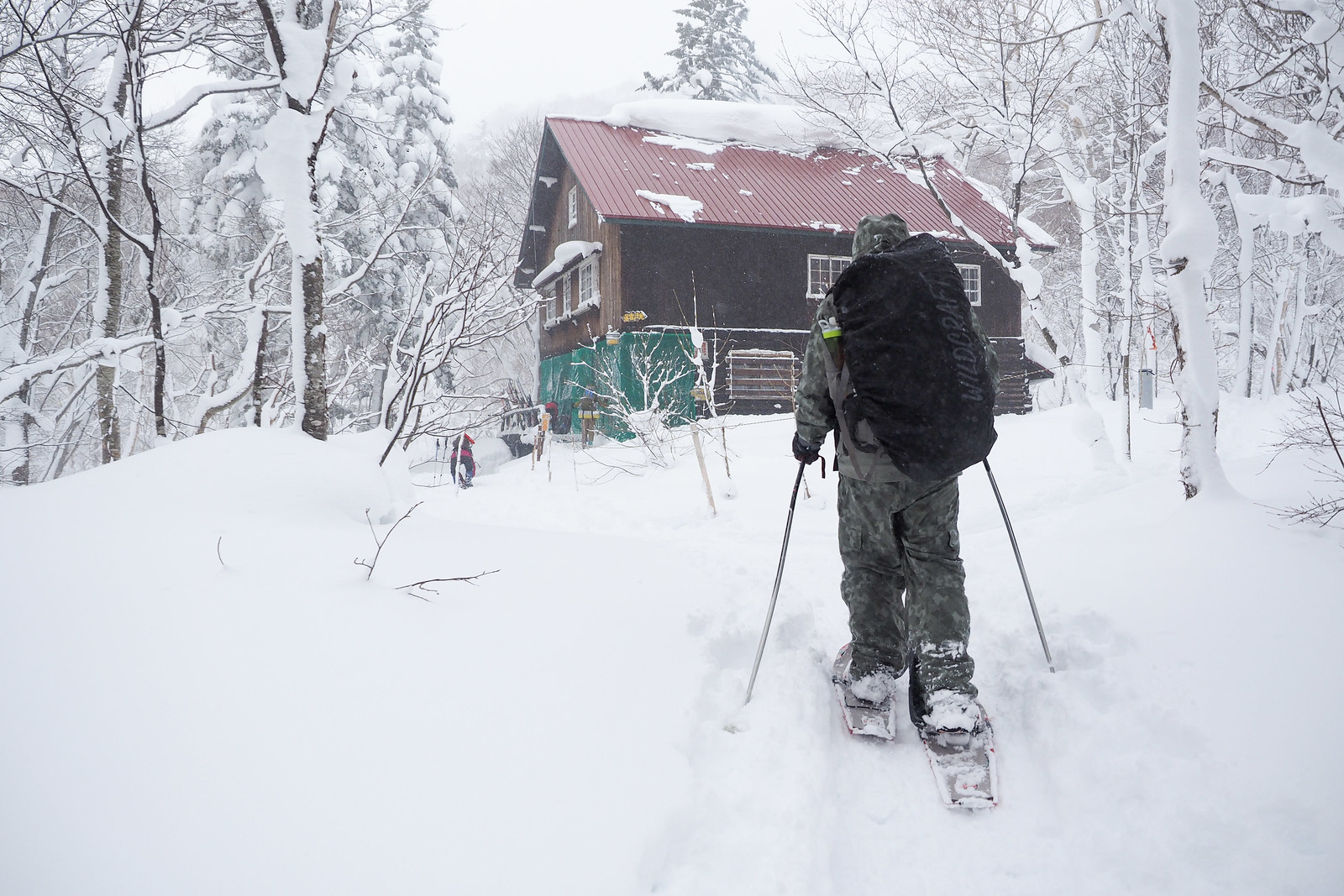
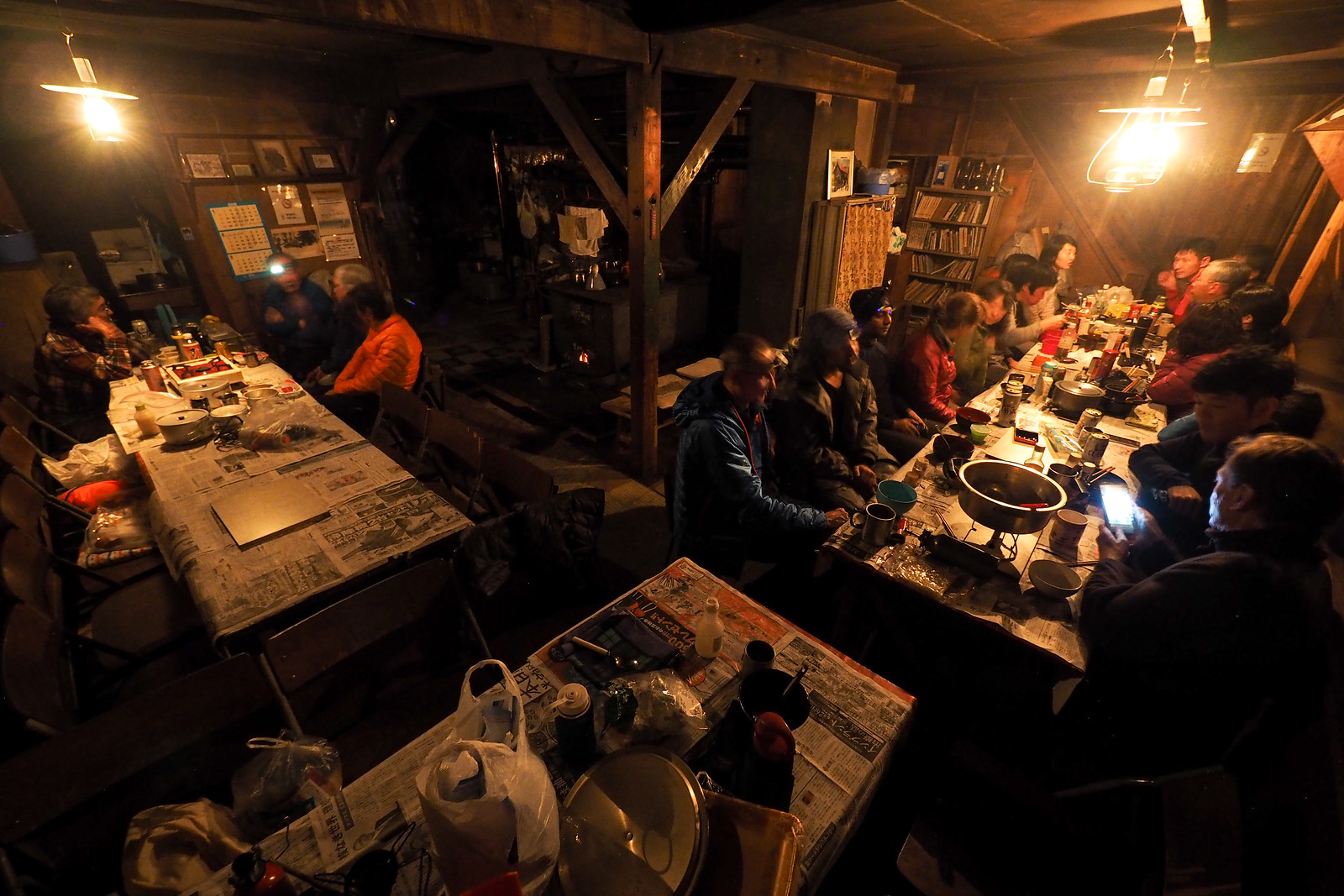
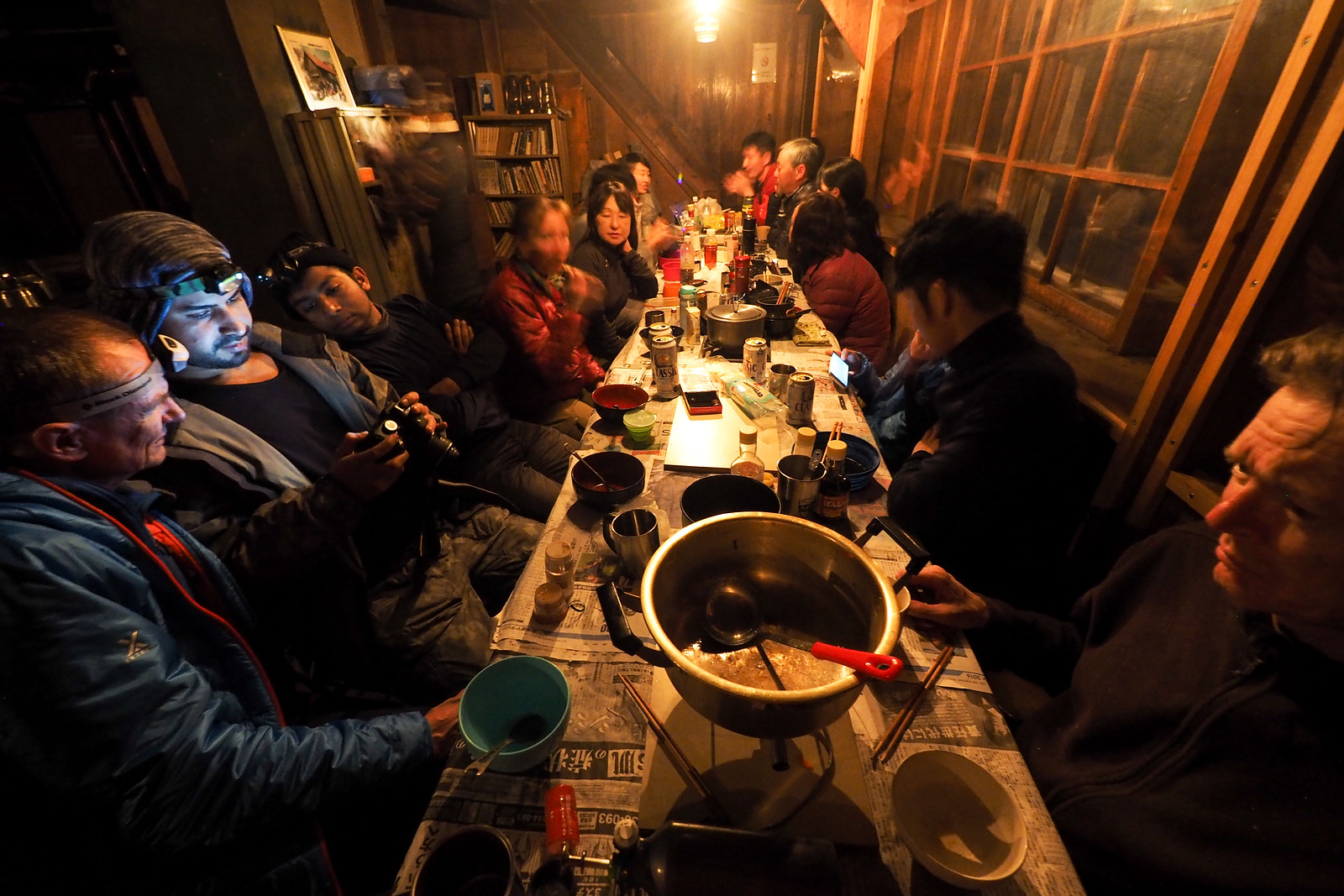








2 thoughts on “Haruka-yama Ski Touring”
Hi!
Unfortunately, it’s a long hike up to the hut and a long way down without proper skiing slopes – about 2h up.
The only good slope is above the hut.
Thanks for the feedback Mathias. You’re right, the only half-decent skiing is behind the hut. Hence, it going all that way it makes sense to make it an overnighter.